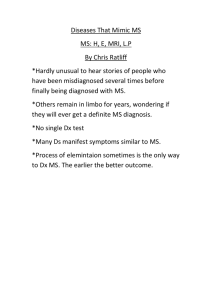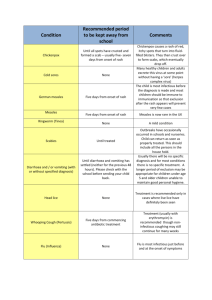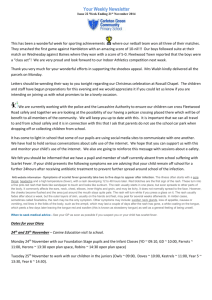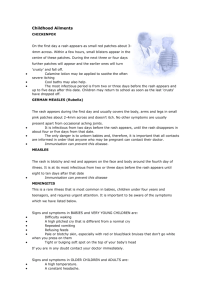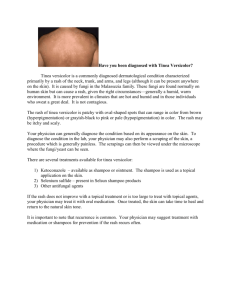HFWF_February_Shinglesxx
advertisement
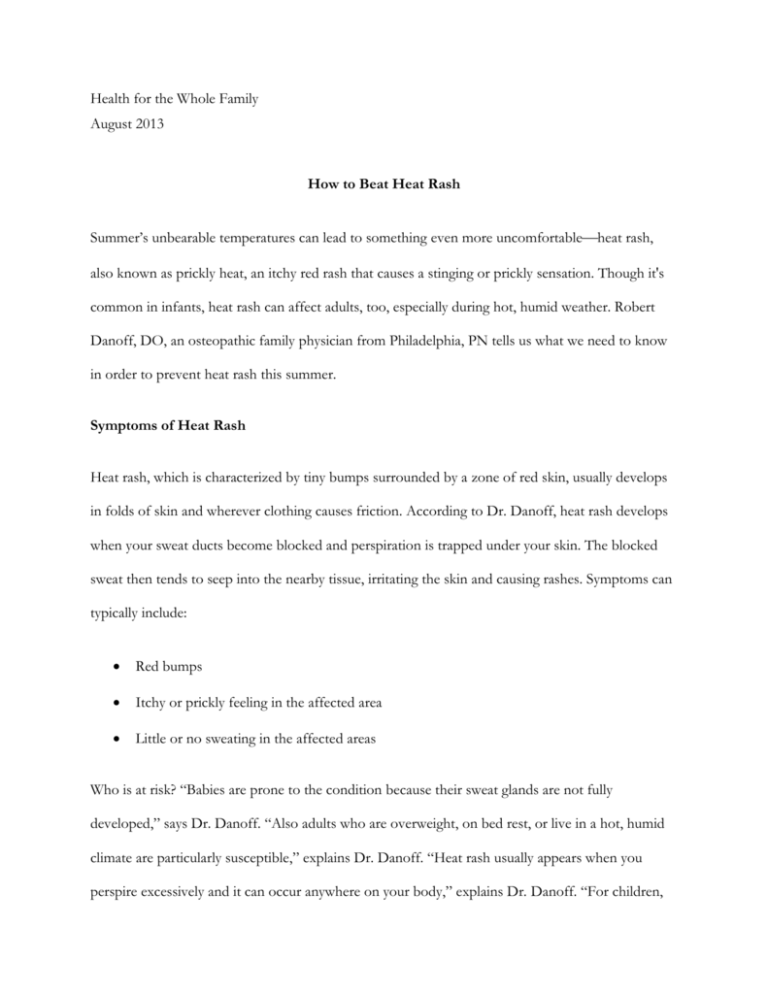
Health for the Whole Family August 2013 How to Beat Heat Rash Summer’s unbearable temperatures can lead to something even more uncomfortableheat rash, also known as prickly heat, an itchy red rash that causes a stinging or prickly sensation. Though it's common in infants, heat rash can affect adults, too, especially during hot, humid weather. Robert Danoff, DO, an osteopathic family physician from Philadelphia, PN tells us what we need to know in order to prevent heat rash this summer. Symptoms of Heat Rash Heat rash, which is characterized by tiny bumps surrounded by a zone of red skin, usually develops in folds of skin and wherever clothing causes friction. According to Dr. Danoff, heat rash develops when your sweat ducts become blocked and perspiration is trapped under your skin. The blocked sweat then tends to seep into the nearby tissue, irritating the skin and causing rashes. Symptoms can typically include: Red bumps Itchy or prickly feeling in the affected area Little or no sweating in the affected areas Who is at risk? “Babies are prone to the condition because their sweat glands are not fully developed,” says Dr. Danoff. “Also adults who are overweight, on bed rest, or live in a hot, humid climate are particularly susceptible,” explains Dr. Danoff. “Heat rash usually appears when you perspire excessively and it can occur anywhere on your body,” explains Dr. Danoff. “For children, you will typically find the rash on their neck, shoulders and chest, armpits, elbow creases, or groin; while in adults, it usually occurs on clothed parts of the body, such as the back, abdomen, neck, upper chest, groin, or armpits.” When You Should See Your Doctor “Most heat rash cases do not require medical care,” says Dr. Danoff. “The best way to treat the rash is to cool your skin and prevent sweating.”. Heat rash tends to clear quickly on its own, usually disappearing within a matter of hours or a day, once skin is cool. However, severe forms may need medical care. Dr. Danoff recommends visiting a physician if you or your child has symptoms that last longer than a few days or observe signs of infection, such as: Increased pain, swelling, redness or warmth around the affected area Golden yellow crust formation or pus draining from lesions Swollen lymph nodes in the armpit, neck or groin A fever or chills “Severe forms of heat rash may require topical therapies, like lotions containing calamine, colloidal oatmeal, or cortisone cream to soothe itching. Also, creams containing anhydrous lanolin may help to prevent blockage of the sweat ducts. However, if you are sensitive to wool, please avoid this ingredient,” He explains. If your rash is severe, Dr. Danoff advises scheduling an appointment with your primary care physician or a physician who specializes in skin disorders so they can properly diagnose and treat your symptoms before they worsen. Tips to Prevent Heat Rash To help protect yourself or your child from heat rash in the summer, Dr. Danoff recommends that you: Dress in loose, lightweight clothing that wicks moisture away from your skin. Bathe in cool water with a non-drying soap that doesn't contain fragrances or dyes. When it's hot, stay in the shade or in an air-conditioned building. Keep your sleeping area cool and well ventilated. Avoid creams or ointments with petroleum, or mineral oil ingredients which can block pores. Staying Cool and Clear of Heat Rashes “Keeping your skin cool and dry is the best measure to prevent rashes,” says Dr. Danoff. “Allow your skin to breathe. Limit tight clothes that cling to skin, wear “breathable” clothes that will allow your sweat to evaporate, and avoid pore-clogging products,” advises Dr. Danoff. “Your skin lasts a lifetime. Taking the time to take care of it always pays off.” Preventive medicine is just one aspect of care osteopathic physicians provide. DOs are fully licensed to prescribe medicine and practice in all specialty areas, including surgery. DOs are trained to consider the health of the whole person and use their hands to help diagnose and treat their patients.
